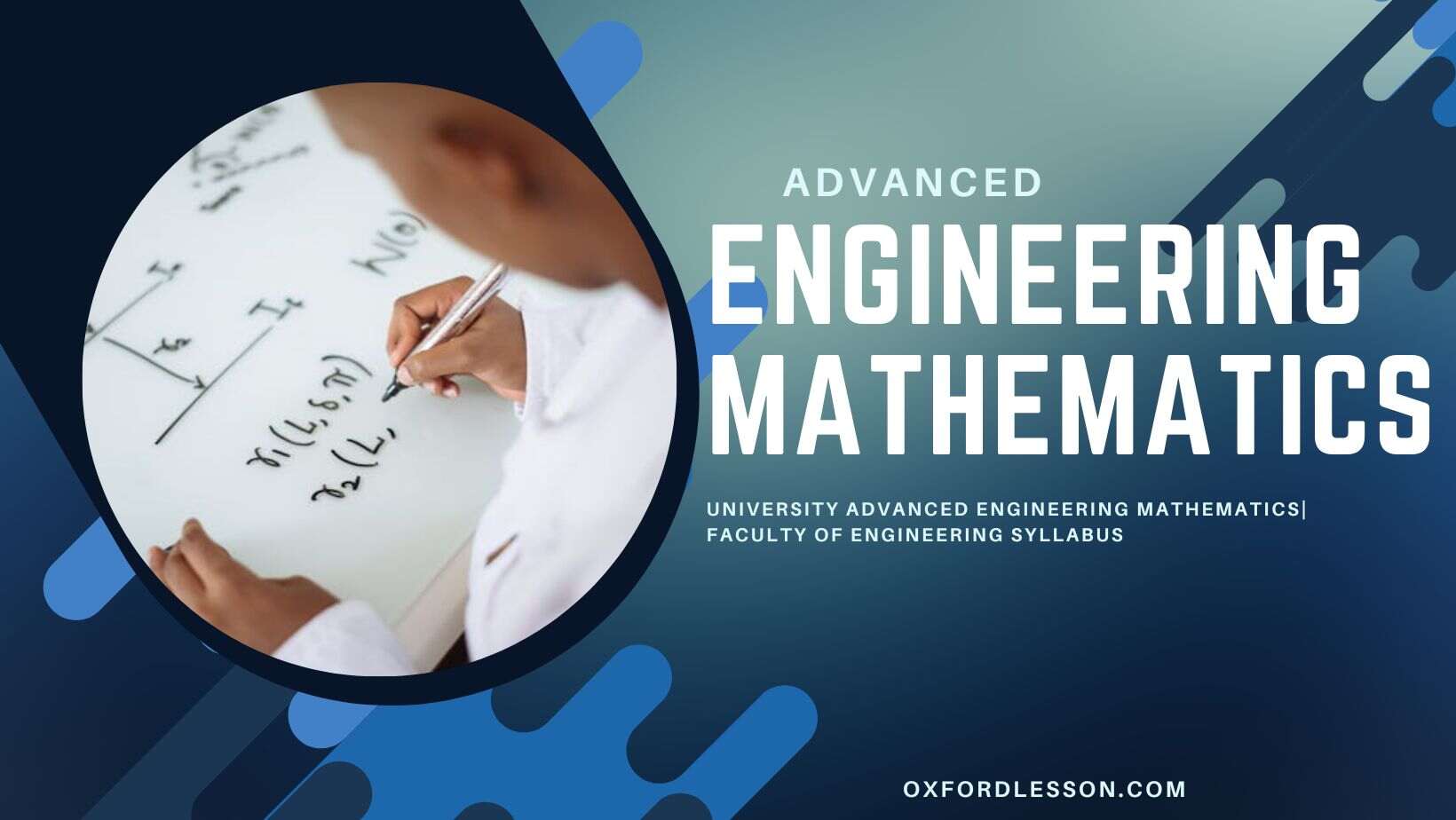Do you have any idea about what the syllabus of advanced engineering mathematics is in the Faculty of Engineering? Here, I hope to discuss above mentioned topic. Many students don’t have a clear idea about that. You can obtain an overview of the information prior to enrolling in the Bachelor of Science (Honours) in Engineering degree program. In this article, I will try to give four advanced engineering mathematics subjects and years 1 to 4 in the faculty of engineering. If you have any problems, you can comment below.
FACULTY OF ENGINEERING DEPARTMENT OF MATHEMATICS & PHILOSOPHY ENGINEERING BACHELOR OF SCIENCE (HONS) IN ENGINEERING
First year- Advanced engineering mathematics
| Lessons | Content |
| Mathematical Logic and methods of proof | · Propositional logic · Predicate logic · Methods of proof |
| Sets and Relations | · Introduction to sets · Introduction to relations |
| Matrix Algebra | · Basic Concepts of matrices · Determinants · Inverse matrix · System of linear Equations and Matrices |
| Functions | · Introduction to functions · Operations and properties on functions |
| Sequence and Series | · Sequences · Infinite Series |
| Calculus on one Variable Functions | · Functions of a single variable: boundaries and continuity · Differentiation of functions of one variable · Curves sketching and applications of differentiation · Integration of functions of one variable |
| Differentiation on two variable functions | · Limits and continuity of two variables’ functions · Differentiating a two-variable function both completely and partially |
| Differential Equation 1- First order | · Introduction to First Order Differential Equations · Variable Separable Type · Exact Differential Equations |
| Differential Equation 2- Higher order | · An overview of higher-order linear differential equations · The D-Operator Method · System of Differential Equations |
| Software tools for mathematics 1 | · Basic Calculations on Octave · Sketching functions |
| Motion Under Resistavity | · Acceleration, velocity displacement, and time relationships · Impulse of a variable force · Work done by a Variable force |
| Moment of Inertia | · A body’s rotational kinetic energy around a fixed axis · A rigid body spinning in a circle · Properties of the Rotating system · Calculation of moment of inertia · The moment of inertia of the given typical bodies · Radius of gyration · Parallel and perpendicular axes theorem |
| Analysis of Rotational Bodies | · Conservation of Mechanical Energy · The Effect of an External Couple · Angular Acceleration · The Compound Pendulum · forces acting on the rotating body’s axis · Impulse of a torque |
| Two Dimensional nonlinear motion | · Components of velocity and acceleration parallel to two perpendicular axes · Acceleration and velocity components parallel and perpendicular to the radius vector |
Second year- Advanced engineering mathematics
| Lessons | Content |
| Introduction to statistics | · Definition of statistics, branches of statistics · Data collection · Summarisation and presentation of data · Descriptive Analysis of data · Preparation of statistical reports |
| Introduction to Probability | · Basic concept of probability · Conditional probability |
| Distribution Theory | · Probability distribution · Discrete probability distribution · Continuous probability distribution |
| Vector Algebra | · Basic concept of vectors · Vector products |
| Vector Functions and Space Curve | · Differentiation of vector functions · Vector applications of dynamics |
| Complex Numbers | · Algebra of complex numbers · Argand plane · De Mover’s theorem |
| Functions of complex variables | · Complex functions · The boundary and persistence of a complex function |
| Introduction to numerical methods | · Scope of numerical computation & error calculations · Techniques for resolving equations · Techniques for resolving linear equation systems · Interpolation and extrapolation · Numerical Integration and Differentiation |
| Power series | · Introduction to Power series · Taylor series and McLaurin’s series |
| Fourier series | · Introduction to Fourier series · Half range Fourier series and Differentiation and integration of Fourier series |
| Laplace Transform | · Introduction to Laplace transform · Differential equation solution utilising the Laplace transform |
| Software tool for mathematics II | · Numerical solutions for non-linear equations · Numerical differentiation and integration using octave · Interpolation with Octave |
Here is, you can refer and get an idea about the advanced engineering mathematics of the first and second years. I hope my next article belongs third and fourth years of the engineering faculty, engineering mathematics concepts. If you want to read it click the link below and read. Next year, I plan to make a full video series about advanced engineering mathematics in all four years in the engineering mathematics(English medium).
The happiest news is, all of these videos are freely use. If you are interested to learn engineering mathematics or if you are an engineering student, keep me touch. I’m going to post to Google Drive or YouTube.. Keep me in touch, I will inform you as soon as.
Advanced engineering mathematics is a language of engineering. It is an accurate language, anyone can access it simply and no barriers. Did you know? Using mathematics, man can land on the moon and return safely to Earth. Each model of engineering education acknowledges this.
Read: Study plan for an engineering student | How do you make it?

